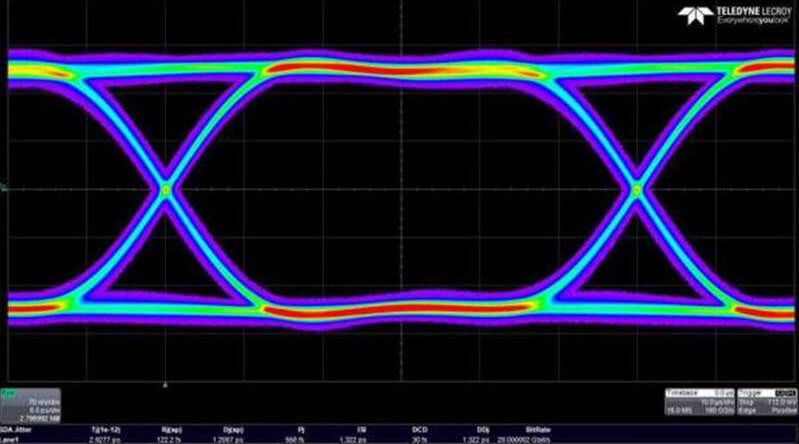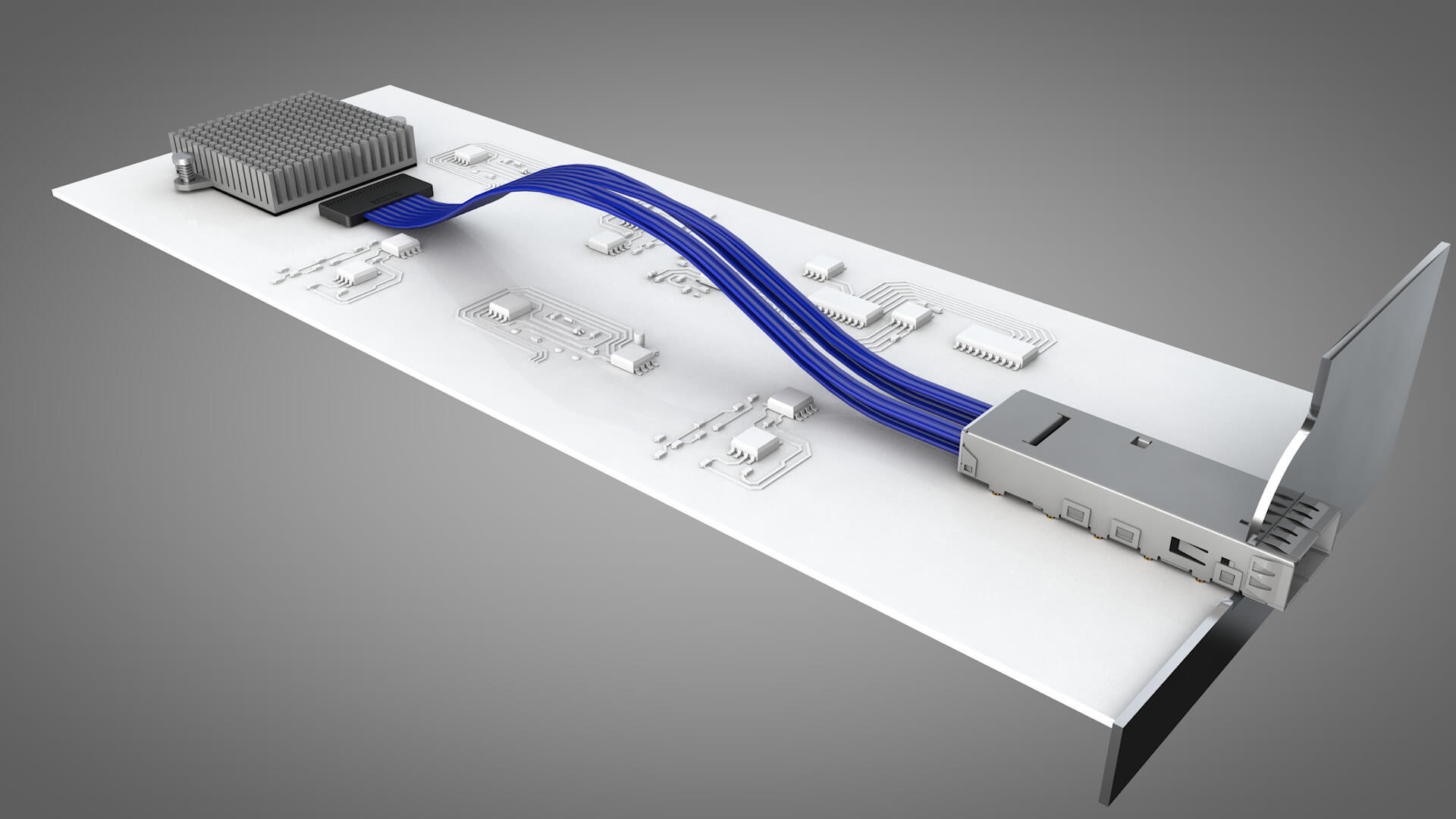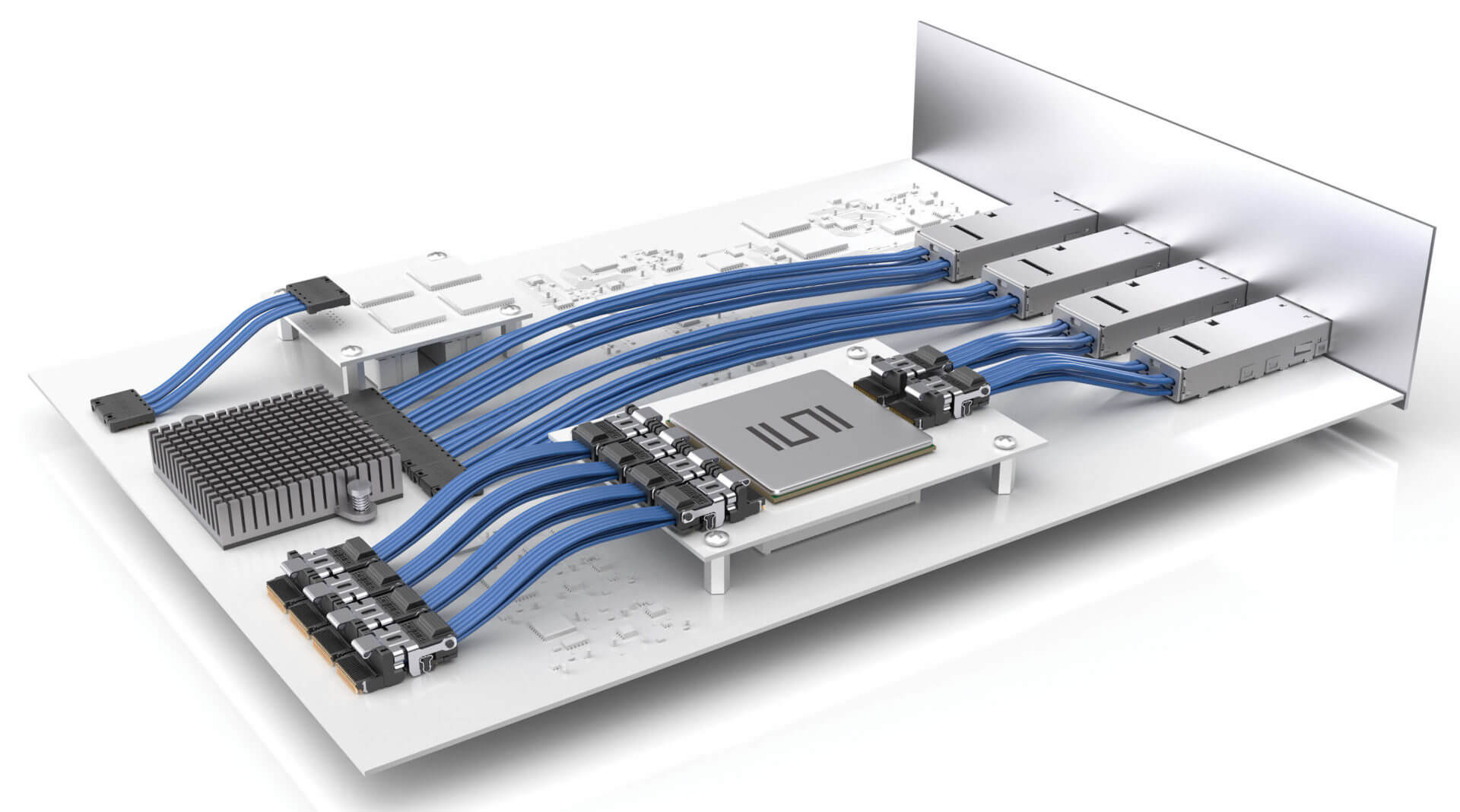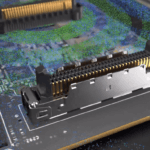
Signal Integrity expert Eric Bogatin recently shared three predictions on the state of signal integrity. Based on his discussions at DesignCon 2016 and thereafter, Eric has three predictions about major changes ahead for high speed serial link systems.
The first is the rollout of 28 Gbps systems will be slower than expected. Eric explains that the semiconductor companies producing the CMOS devices – ASIC, FPGA or custom – are doing fine producing the silicon with acceptable performance at 28 Gbps. The image above is an example of a very clean eye from 28 Gbps Tx (transmitter). But semiconductor manufacturers’ ability to sell to end users designing and manufacturing systems operating with 28 Gbps links is, however, limited by their ability to support these customers.
The second is there is a potential roadblock ahead for 56 Gbps PAM4 systems. Eric elaborates on the fact that while getting one channel operating at 56 Gbps PAM4 is possible, getting hundreds of channels operating, in close proximity, at acceptable bit error ratio, maybe requires heroic efforts.
The third is all is not gloom and doom. To quote Eric, “I did hear of one innovation that may be the savior for high-speed serial links in copper-based interconnects. Given the increasing challenges to get a long channel operating at 28 Gbps in PAM2-NRZ or a 56 Gbps channel operating at PAM4, there may be an intermediate fix available. Every large connector company I spoke with has a practical plan to implement cabled interconnects integrated with the board to supplement laminated backplane and motherboard routing.”
He said “The advantage of a cabled system is lower loss and less channel-to-channel cross talk. The larger circumference in the round conductors means lower conductor loss per length in a cable than on a board. While there may be lower cross talk in the cable interconnects, the cross talk in the connector and its board footprint still needs to be considered, but many of the connector companies seem very good at this.”
Eric discusses how this approach may be a short-term fix to enable both a robust 56 Gbps (28 Gbaud) PAM4 or an PAM2-NRZ 56 Gbps system without the headaches of extremely high isolation requirements of a PAM4 system.
Eric uses the Samtec FireFly™ interconnect system as an example of this approach. He notes a nice feature of the Samtec system is the integration of optical cables as well as copper cables to ease the transition to board-level optical interconnects. Here’s a link to Eric’s full article.
Since this is a Samtec blog I’ll add that Samtec Flyover technology is explained in this blog and in the new Twinax Flyover Application Design Guide. Instead of routing 28+ Gbps signals through lossy PCBs, vias and other components, they route through ultra-low skew twinax cable assemblies in system. This minimizes signal degradation due to the factors mentions while also eliminating the need for more expensive PCB materials.
Eric Bogatin is the Dean of the Signal Integrity Academy, www.beTheSignal.com, and an adjunct professor in the ECEE Department at the University of Colorado, Boulder. He received his BS in Physics from MIT and PhD in Physics from the University of Arizona in Tucson. He can be reached at [email protected].


